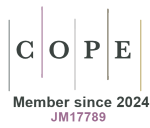Most read articles by the same author(s)
- Claudio Jommi, Patrizio Armeni, Arianna Bertolani, Francesco Costa, Monica Otto, The future of Funds for Innovative Medicines: results from a Delphi Study , Global and Regional Health Technology Assessment: Vol. 8 No. 1 (2021): January-December 2021
- Claudio Jommi, Filippo Cipriani, Francesca Fanelli, Maria Paola Pedone, Walter Canonica, The effects of disease cross-coverage by dupilumab on the costs sustained by the Italian National Health Service , Global and Regional Health Technology Assessment: Vol. 7 No. 1 (2020): January-December 2020
- Alberto Bortolami, Claudio Jommi, Filippo Bresciani, Luca Piccoli, Elisa Sangiorgi, Giovanna Scroccaro, Regional Formularies in Italy: current state and future perspectives , Global and Regional Health Technology Assessment: Vol. 11 No. 1: January-December 2024
- Claudio Jommi, Antonio Addis, Nello Martini, Elena Nicod, Marcello Pani, Annalisa Scopinaro, Sabine Vogler, Price and reimbursement for orphan medicines and managed entry agreements: does Italy need a framework? , Global and Regional Health Technology Assessment: Vol. 8 No. 1 (2021): January-December 2021
- Marco Chiumente, Alberto Russi, Federica Todino, Daniele Mengato, Marina Coppola, Melania Rivano, Angelo Claudio Palozzo, Claudio Jommi, Preparation of intravenous chemotherapy bags: evaluation of a dose banding approach in an Italian oncology hospital , Global and Regional Health Technology Assessment: Vol. 8 No. 1 (2021): January-December 2021
- Oriana Ciani, Carlo Federici, Giulia Fornaro, Carla Rognoni, Value-based healthcare: Il nuovo approccio di AIFA alla determinazione multidimensionale del valore , Global and Regional Health Technology Assessment: Vol. 7 No. 1 (2020): January-December 2020
- Federico Villa, Claudio Jommi, Armando Genazzani, Sara Antignani, Simona Montilla, Mario Melazzini, Early access to the market: from the conditional approvals of the EMA to the specific contractual agreements of AIFA , Global and Regional Health Technology Assessment: Vol. 5 No. 1 (2018): January-December 2018
- Claudio Jommi, Federico Pantellini, Giovanni Giuliani, Marianna Cavazza, The economic impact of 14 compassionate use programs for medicines in Italy, in the perspective of the National Health Service , Global and Regional Health Technology Assessment: Vol. 11 No. 1: January-December 2024
- Claudio Jommi, Giovanni Apolone, Giovanna Scroccaro, Valentina Acciai, Antonio Addis, Andrea Ardizzoni, Renato Bernardini, Alberto Bortolami, Alessia Brigido, Giuliano Buzzetti, Pier Luigi Canonico, Francesca Caprari, Stefano Centanni, Chiara Cernetti, Americo Cicchetti, Giorgio Corsico, Francesco Damele, Filippo De Braud, Sara Manurita, Francesco Saverio Mennini, Irene Olivi, Federica Parretta, Lara Pippo, Stefania Pulimeno, Massimo Riccaboni, Giuseppe Rossi, Cecilia Saleri, Alessandra Sinibaldi, Federico Spandonaro, Cristian Stefenoni, Elena Visentin, Pierluigi Viale, Giuseppina Zapparelli, Patrizia Popoli, Drugs price and reimbursement regulation: comparators, endpoints and role of the cost-effectiveness , Global and Regional Health Technology Assessment: Vol. 9 No. 1 (2022): January-December 2022
- Arianna Bertolani, Roberto Ravasio, Paola Raimondo, Claudio Jommi, The costs incurred by patients to get eligibility to PCSK9 treatment and one-year follow-up: the results of the PRIOR Study , Global and Regional Health Technology Assessment: Vol. 9 No. 1 (2022): January-December 2022









